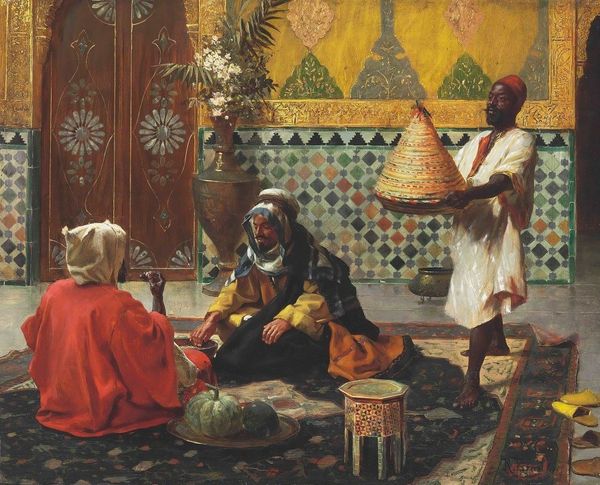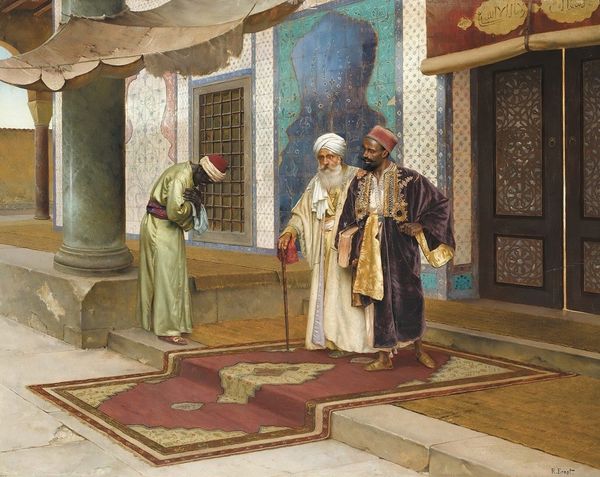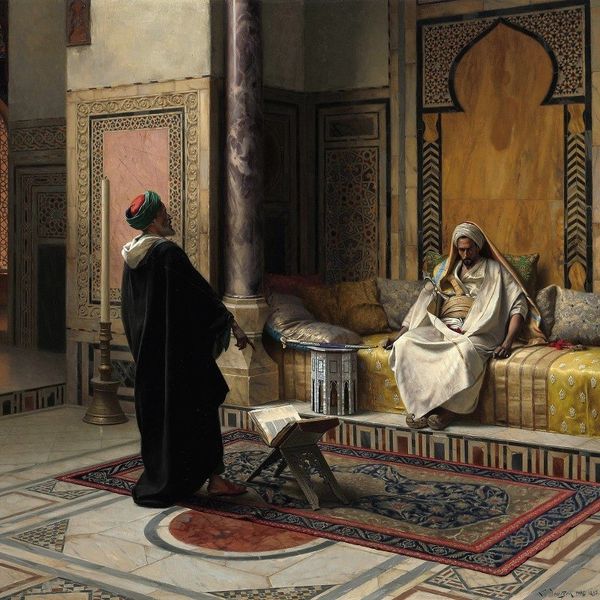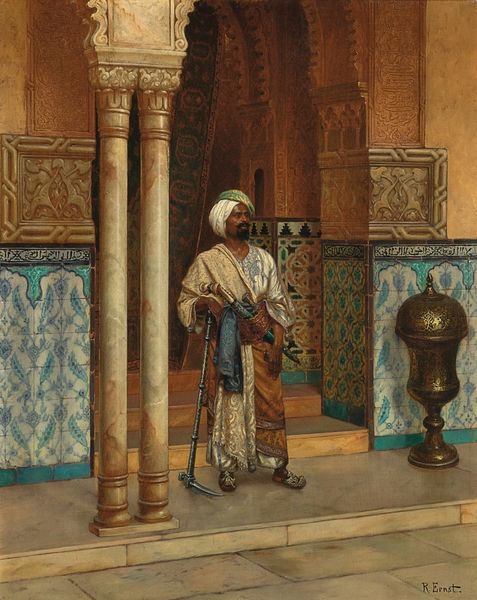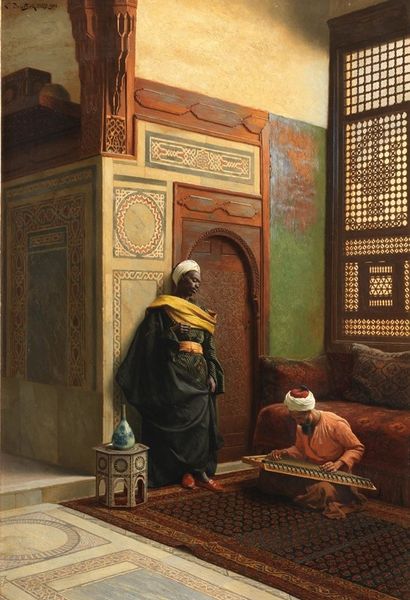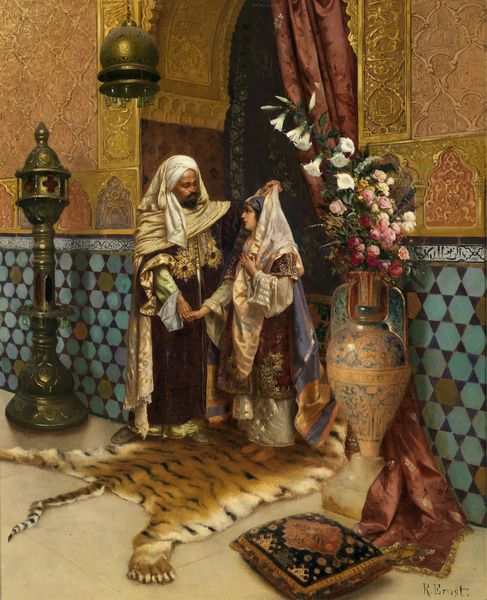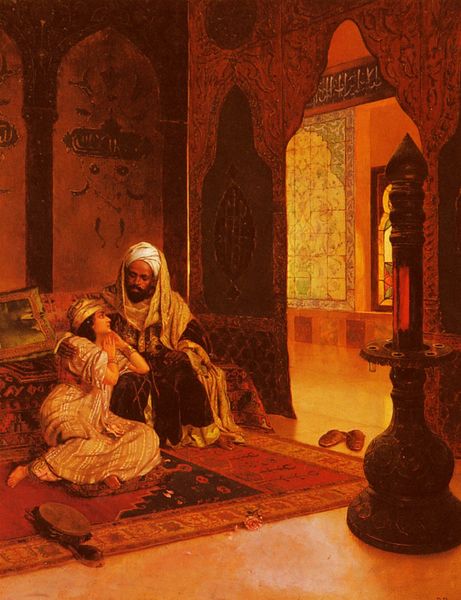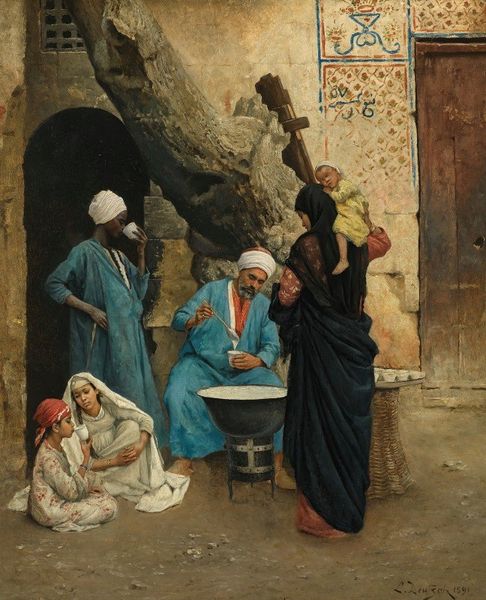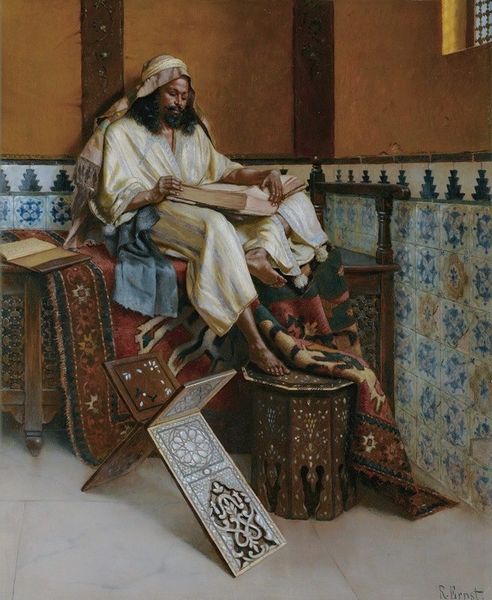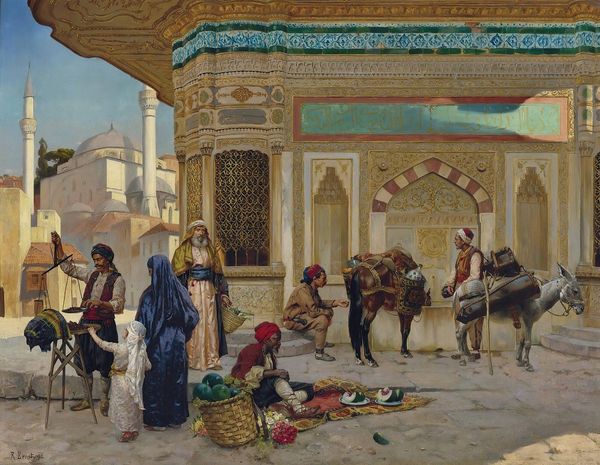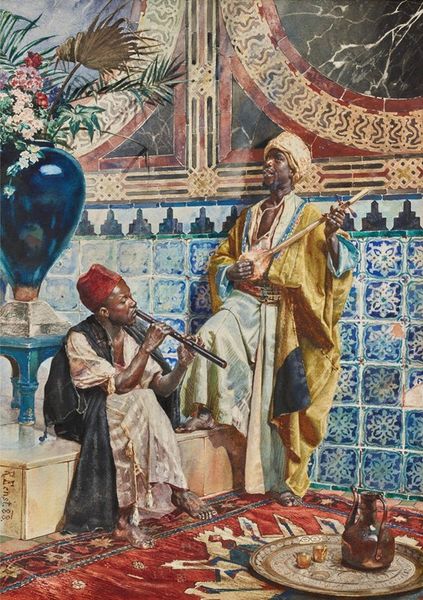
painting, oil-paint
#
portrait
#
painting
#
oil-paint
#
landscape
#
oil painting
#
orientalism
#
islamic-art
#
genre-painting
#
history-painting
Copyright: Public domain
Curator: What strikes me immediately is the air of languid luxury, all those soft cushions and the gleaming metalwork. Editor: Absolutely, and look at the contrast in textures! We're looking at Rudolf Ernst's work, seemingly titled "Two Warriors in the Alhambra Palace, the Court of Lions in the Background." Though the date is unknown, Ernst was known for Orientalist paintings. The details, the precision in rendering the textiles and architectural details... It's a clear testament to his skill in oil painting. Curator: It does feel almost staged, though. Do you get the sense it's less about historical accuracy and more about constructing a fantasy? Editor: Yes, certainly. Ernst, as many of his peers, may not have sought true historical depiction; however, this constructed world relies heavily on imported craft: look at the carved furniture, the metal shields, and inlaid surfaces... Each detail has likely been shipped from elsewhere, making its context unclear. Curator: The Alhambra itself becomes a backdrop, exoticized and ornamental. Are these 'warriors' really warriors, or are they characters in a carefully constructed tableau vivant for Western consumption? The 'warriors' also appear somewhat detached and introspective, lacking the dynamism one might expect. Editor: Agreed, the painting speaks more to a fascination with material culture than any real insight into social roles. The craftsmanship on display emphasizes this remove—labor separated from lived experience. And it caters to that desire for the 'authentic' exotic. Curator: It’s interesting to think about how museums today wrestle with representing such imagery responsibly. Do we acknowledge the undeniable skill of the artist while simultaneously critiquing the inherent biases within the Orientalist gaze? Editor: The frame itself tells the story, really. On one hand it is a window into the artist's experience and perceptions; on the other, its contents come to embody complex dynamics of appropriation and exoticism that museums are now responsible to untangle. Curator: It leaves us with much to consider about how historical narratives are shaped. Editor: Precisely, it prompts us to consider the narratives shaped both by artists and by the act of artistic consumption, even now.
Comments
No comments
Be the first to comment and join the conversation on the ultimate creative platform.
